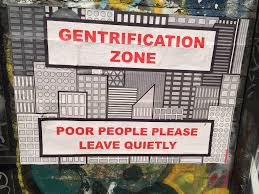(Please see a summary of the previous chapter in Chapter 2: Rent or Buy)
This chapter outlines the criteria that affect the future price of properties. Using and mining extensive data, Zillow algorithms forecast the one-year or longer term surge in prices. Forecast is possible, because real estate value in major cities follow similar patterns, which are predictable now.
The three main criteria are: proximity and access, gentrification and hosing stocks.
a) Neighborhoods adjacent to city center increase in value faster than the city center itself, until, over time the difference in price shrinks until the outlying areas become of similar value to city center in a decade or two. Trend is rather complicated mainly because there is no full insight into the underlying reasons. Furthermore, even within the concentric rings that surround city centers, specific hot areas grow faster than other spots.
Trend starts with high demand for downtown with restaurants, cafes, nightlife and facilities, so prices increase. Then some people start coming to the adjacent more affordable neighborhood which is close enough or (if not physically close) along transit lines for easy access to the prime area’s charms. As more people move into the surrounding area, restaurants, cafes and small businesses pour in, and this neighborhood becomes a hot spot itself, with prices similar to city center. Zillow calls this the “halo effect”. Please note that even though this effect is observed very often, it may not be true for every city. Trend is more pronounced in diverse cities than in homogeneous ones.
b) Cheap neighborhoods with less refined population become attractive to specific class of more refined people who would be willing to live in the area because of affordability and despite the cultural difference. Consequently more people get attracted to this new hotspot of culture, which brings with itself a new wave of change, and entices investors and builders, hence spurs growth in the area with even more upper-middle class residents (or gentry) moving in. Gentrification has been a controversial phenomenon. Details are out of the scope of this summary.
Spencer claims that Zillow has insight into some forces that propel gentrification:
c) A couple of decades before gentrification starts, early signs can be detected. Areas with older houses, lower home ownership rates and access to more popular areas are the likeliest candidates for gentrification (and I would argue also halo effect).
In short a combination of older houses, lower home-ownership, shift in median income and rate of new investment and redevelopment are major drivers of gentrification in a neighborhood.
PS: see the book on Amazon at Zillow Talk: The New Rules of Real Estate

